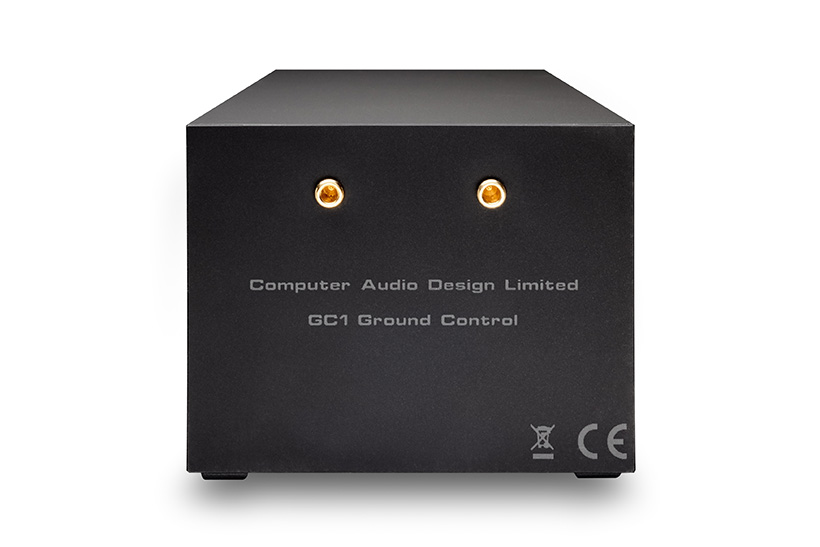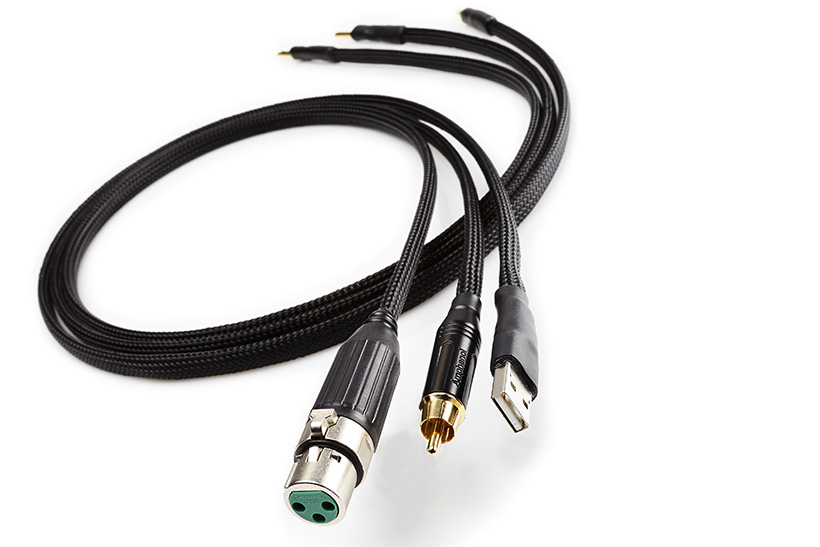Computer Audio Design is a small London based company with a quest to get the best possible sound out of digital audio. Designer Scott Berry is a hair shirt sporting purist, a state of affairs made explicit by his 1543 MkII DAC which has only one input and one pair of outputs (USB and RCA respectively), the mains cable is a heavyweight, inflexible affair that is captive – you cannot disconnect it from the DAC – and the case is made entirely out of acrylic. As a result the CAD is among the most natural, effortless sounding digital to analogue converters on the planet. But that’s not enough for Scott, he realises that the enemy of high resolution is noise, not the cars driving by outside but noise coming from the mains and from other audio components. He’s right, the less noise there is floating around a system the quieter the background to the sound and the more you can hear, it’s what differentiates the great from the good in all forms of electronics.

Yet we live in a world where the power coming out of the wall is increasingly polluted by noise from all manner of sources. Some try to combat this problem with mains filters and regenerators and these help but usually have limitations when it comes to getting enough amperage to power amplifiers. But the Ground Control is different, it doesn’t sit between the mains and the audio hardware, it plugs into the hardware or the mains and absorbs noise, it is essentially a passive device, hence the lack of illumination. Scott explains that the Ground Control contains “materials that convert high frequency energy into heat” for that is where the problem lies in his view. It comes from the switch mode power supplies in computers, routers, NAS drives etc and is the main reason why linear power supplies make the devices they power sound better, even if that device is a broadband switch that should have no bearing on the sound. It’s the noise that it adds to the signal that degrades the sound. Quite how the GC1 achieves this is a well kept secret but what Scott will say is that it works over a very wide band “from very high kHz range to over 15GHz”. Noise that’s well out of the audio band yet when you reduce it the effect is not at all subtle.
The GC1 absorbs both noise on the signal ground that exists within components and is carried by the negative side of an any audio connector between components, and noise on the earth as found on the earth pin of a mains plug and connected directly to the majority of components. So there is plenty of scope for this noise to get around a system.
The GC1 can be connected with up to two individual components with cables that terminate in a number of connections including USB, 4mm banana plug, RCA plug etc. Or it can be plugged directly into the mains with a connector that has two banana plugs for the GC1 and a 13A plug at the other end. In my system the latter approach produced the biggest improvement, presumably because it reduces noise for the whole system, a system that has more than two active components. But one of the first things I tried it on was a Tom Evans Groove Anniversary phono stage, another acrylic encased piece of kit, and my Townshend Allegri passive preamplifier. In this situation it increased low level resolution and made the quieter elements in the music easier to appreciate, it also improved timing, a quality that I place very high in the pantheon of audio essentials. Latterly I tried the GC1 on the Allegri alone and was surprised to find it remained beneficial, the explanation lies in the fact that there is noise coming out of connected components and the Allegri passes it on to the power amp to be amplified. In fact when I disconnected the phono stage the result remained almost the same, vinyl of course being an unlikely source of high frequency noise. Reconnecting the earth point on the Groove did have its benefits however, it is connected to the mains after all. This time notes gained depth and solidity, and timing did what I wanted it to do; got more coherent.

Used with CAD’s 1543 MkII DAC, a device that contains the same materials as the GC1 in order to make it as electrically quiet as possible, the realism went up a notch or two. Taking it away to check that I wasn’t just imagining it the sound lost its focus, so back it went and with it came a freshness of tempo and musical flow that was previously masked by what little noise there is coming out of this DAC. It does remarkable things for reverb, transforming the drum sound on ZZ Top’s ‘La Grange’ and revealing precisely what the two guitars are doing during the ‘solo’.
With a less fanatically constructed converter, a Primare DAC30, the noise floor dropped audibly and there was more shine, clarity and purity to the sound overall. Another DAC, the Bryston BDA 3, opened up low level detail and produced much cleaner highs, and yes timing improved as well. A potential source of noise in most streaming systems is the NAS drive, a computer peripheral that has not been designed with sound quality in mind yet provides relatively affordable storage for music files. I use something that was designed for sound quality, a Melco N1A server, which has a linear power supply and effectively means you don’t need a gigabit switch at all, but it too improved markedly when I hooked up the GC1. The sound opened up and gained in vitality with a more fluent and yet calm delivery that lost much of the glare associated with digital sources.

When the mains earth connector came along I tried that and got a dramatic cleaning up of high frequencies in return, piano notes and cymbals became cleaner, clearer and less grainy. Overall this gave me the biggest upgrade because it benefited every part of the system but ultimately it would be nice to have both. Scott is building a larger GC unit that can be connected to both the mains and multiple devices in a system, but he’s not a man to be rushed, so don’t hold your breath.
The Ground Control effect is that you end up with a system that can be played at higher levels without discomfort because distortion and noise has been significantly reduced. It’s a win win state of affairs that is so dramatic that you wonder why no one has done it before. Presumably the materials themselves are new but likewise the problems that they address have become far more prevalent in the digital age. Switch mode power supplies have only become common place in the last twenty years and broadband networks are pretty new as well. Technological advances bring their own problems and those of us with decent sound systems are more likely than most to suffer them, so disconnect those homeplugs forthwith, kill the wi-fi and turn off the fridge. If that sounds too drastic invest in one or more of these innocuous black boxes and be amazed. The GC1 is nicely built and finished but still seems expensive for a passive device, yet I would challenge anyone to produce as great an improvement in a serious system with anything more affordable.
Jason Kennedy
Price
GC1 including one cable terminated as required £1,650
Additional spade, banana, XLR, USB or RCA terminatedcable £250
Specifications
Dimensions DxHxW: 322 x 88 x 111mm
Weight: 4.65 kg
Manufacturer
CAD
T 0203 397 0334
www.computeraudiodesign.com


